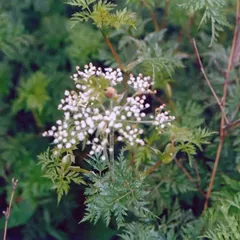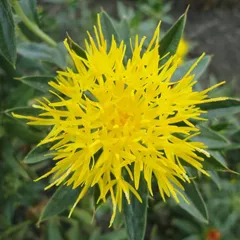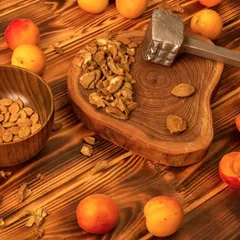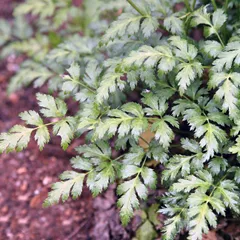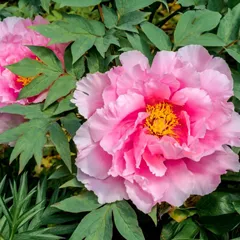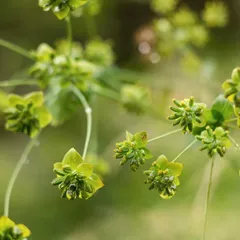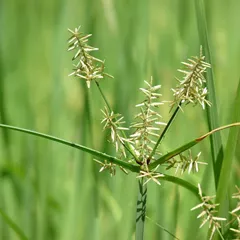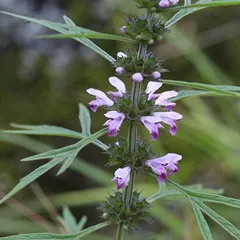Wu Yao Tang
Wu Yao Tang
Chinese: 乌药汤
Pinyin: Wū Yào Tāng
Other names: Lindera Decoction
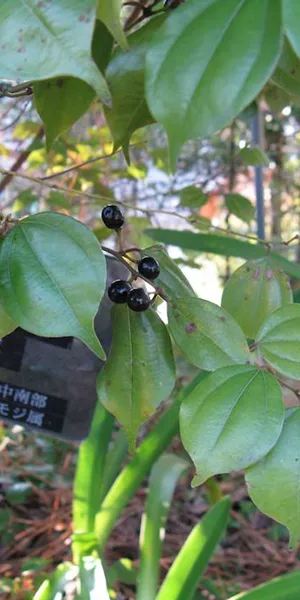
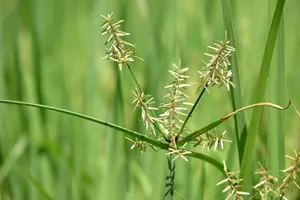
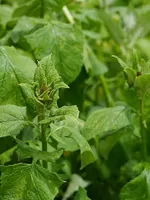
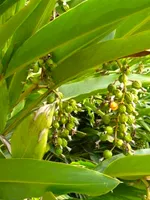




Wu Yao Tang
Wu Yao Tang
Chinese: 乌药汤
Pinyin: Wū Yào Tāng
Other names: Lindera Decoction
Number of ingredients: 9 herbs
Formula category: Formulas that promote Qi movement
Conditions for which it may be prescribed: Late menstruationIrregular menstruationAbsence of menstruation and one other condition
- Pacifies the Liver
- Moves Qi
- Stops pain
- Nourishes Liver Blood
- Eliminates Stagnation
Source date: 1336 AD
Source book: Secrets from the Orchid Chamber
The information provided here is not a replacement for a doctor. You shouldn't use it for the purpose of self-diagnosing or self-medicating but rather so you can have a more informed discussion with a professional TCM practitioner.
Wu Yao Tang is a 9-ingredient Chinese Medicine formula with Lindera Roots (Wu Yao) as a principal ingredient.
Invented in 1336 AD, it belongs to the category of formulas that promote Qi movement. Its main actions are: 1) pacifies the Liver and 2) moves Qi.
In Chinese Medicine health conditions are thought to arise due to "disharmonies" in the body as a system. These disharmonies are called "patterns" and the very purpose of herbal formulas is to fight them in order to restore the body's harmony.
In this case Wu Yao Tang is used by TCM practitioners to fight patterns like Qi And Blood Stagnation, Liver Qi Stagnation or Qi Stagnation. From a Western Medicine standpoint, such patterns can give rise to a range of conditions such as absence of menstruation, irregular menstruation or late menstruation for instance.
On this page, after a detailed description of each of the nine ingredients in Wu Yao Tang, we review the patterns and conditions that Wu Yao Tang helps treat.
The nine ingredients in Wu Yao Tang
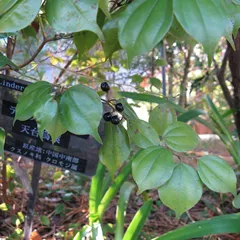
Wu Yao is a king ingredient in Wu Yao Tang. Like the name indicates, it means it has more power than other ingredients in the formula.
1. Lindera Roots (Wu Yao)
Part used: Dried root tuber
Nature: Warm
Taste(s): Pungent
Meridian affinity: BladderKidneyLungSpleen
Category: Herbs that regulate Qi
Wu Yao smoothes the flow of Qi, disperses Cold, and alleviates pain. It directs rebellious Qi downward to help relieve Excess symptoms in the chest, disperses Cold to address the cause of the Stagnation, and alleviates pain to treat the symptoms. If Wu Yao is better at directing the Qi downward, Xiang Fu is better at raising and lifting the Qi. If the former is better at eliminating Cold, the latter is better at resolving constraint due to emotional factors. Their combination thus addresses the blockage of Qi within both the Qi and Blood levels, releases constraint from both the Liver and Gallbladder, directs rebellious Qi in the chest and abdomen downward, and warms the flow of Qi, which has been slowed by pathogenic Cold.
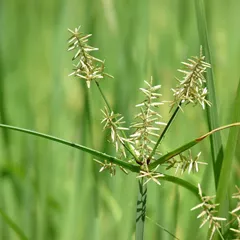
2. Coco-Grass Rhizomes (Xiang Fu)
Part used: Dried rhizome
Nature: Neutral
Meridian affinity: LiverSanjiaoSpleen
Category: Herbs that regulate Qi
Xiang Fu specifically treats disorders due to Qi blockage, but also enters the Blood aspect to move Blood that has become static due to Qi Stagnation. It also pacify the Liver and stop pain. Its combination with Wu Yao addresses the blockage of Qi within both the Qi and Blood levels.
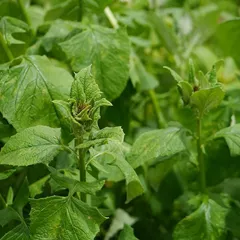
3. Costus Roots (Mu Xiang)
Part used: Dried root
Nature: Warm
Meridian affinity: GallbladderLarge intestineLiverLungSpleenStomach
Category: Herbs that regulate Qi
Mu Xiang is bitter and acrid. It promotes the movement of Qi and stops pain. It focuses on the Qi dynamic of the Middle Burner, the Spleen and the Stomach, because of its focal role in the ascent and descent of Qi. Together with Sha Ren, it reduces distention and alleviates pain while also strengthening the Spleen. Because Qi moves not just the Blood but also the Body Fluids, Qi Stagnation is widely accompanied by Dampness and water accumulation. This conjunction of symptoms, often found in premenstrual syndrome, is effectively addressed by this combination of herbs.
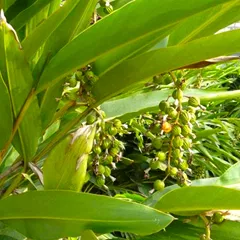
4. Amomum Fruits (Sha Ren)
Part used: Dried ripe fruit
Nature: Warm
Taste(s): Pungent
Meridian affinity: KidneySpleenStomach
Category: Aromatic herbs that transform Dampness
Sha Ren is acrid, warm and aromatic. It promotes the movement of Qi and transforms Dampness. It focuses on the Qi dynamic of the Middle Burner, the Spleen and the Stomach, because of its focal role in the ascent and descent of Qi. Together with Mu Xiang, it reduces distention and alleviates pain while also strengthening the Spleen.
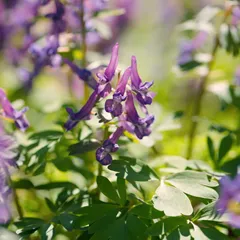
5. Corydalis Tubers (Yan Hu Suo)
Part used: Dried tuber
Nature: Warm
Meridian affinity: SpleenHeartLiverLung
Category: Herbs that invigorate the Blood
In general Yan Hu Suo's main actions are as follows: "Moves the Blood, breaks Blood Stagnation and reduces associated pain. Regulates Stagnant Qi and reduces associated pain."
In the context of Wu Yao Tang, it is used because it moves the Qi to invigorate the Blood, regulating the menses and alleviating pain.
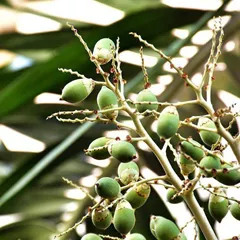
6. Areca Nuts (Bing Lang)
Part used: Dried ripe seed
Nature: Warm
Meridian affinity: Large intestineStomach
Category: Herbs that expel parasites
In general Bing Lang's main actions are as follows: "Destroys parasites. Regulates Qi circulation. Promotes urination."
In the context of Wu Yao Tang, it is used because it pacifies the Liver, move Qi, eliminate Stagnation and stop pain.
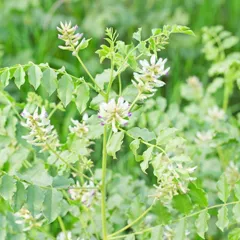
7. Liquorice (Gan Cao)
Part used: Dried root and rhizome
Nature: Neutral
Taste(s): Sweet
Meridian affinity: HeartLungSpleenStomach
Category: Tonic herbs for Qi Deficiency
Gan Cao is sweet, cool and relaxing. It serves as envoy to moderate the acrid and warming actions of the other herbs and harmonizes the diverse functions of the various ingredients.
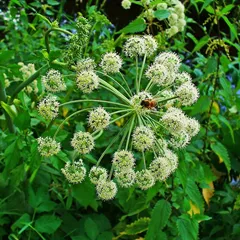
8. Dong Quai (Dang Gui)
Part used: Dried root
Nature: Warm
Meridian affinity: HeartLiverSpleen
Category: Tonic herbs for Blood Deficiency
In general Dang Gui's main actions are as follows: "Tonifies the Blood. Lubricates the Intestines. Relieve constipation. Promotes circulation and dispels Bi Pain. Reduce Dysmenorrhea and help with irregular menstruation."
In the context of Wu Yao Tang, it is used because it nourishes and invigorate Blood.
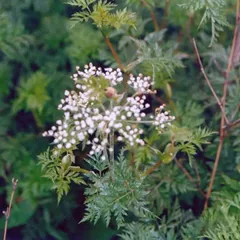
9. Szechuan Lovage Roots (Chuan Xiong)
Part used: Dried rhizome
Nature: Warm
Taste(s): Pungent
Meridian affinity: GallbladderLiverPericardium
Category: Herbs that invigorate the Blood
In general Chuan Xiong's main actions are as follows: "Regulates and moves the Blood. Relieves Wind-Cold and pain. Circulates the Qi in the Upper Burner, relieving headaches."
In the context of Wu Yao Tang, it is used because it nourishes and invigorates Blood.
Conditions and patterns for which Wu Yao Tang may be prescribed
It's important to remember that herbal formulas are meant to treat patterns, not "diseases" as understood in Western Medicine. According to Chinese Medicine patterns, which are disruptions to the body as a system, are the underlying root cause for diseases and conditions.
As such Wu Yao Tang is used by TCM practitioners to treat three different patterns which we describe below.
But before we delve into these patterns here is an overview of the Western conditions they're commonly associated with:
Absence of menstruation Irregular menstruation Late menstruation Chronic pelvic inflammatory disease
Again it wouldn't be correct to say "Wu Yao Tang treats absence of menstruation" for instance. Rather, Wu Yao Tang is used to treat patterns that are sometimes the root cause behind absence of menstruation.
Now let's look at the three patterns commonly treated with Wu Yao Tang.
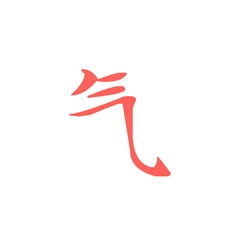
Qi is one of Chinese Medicine's vital subtances. Learn more about Qi in Chinese Medicine
Qi And Blood Stagnation
Pulse type(s): Choppy (Se), Deep (Chen), Fine (Xi)
Symptoms: Insomnia Dark face Moodiness Dizziness Chest pain Depression Amenorrhea Purple lips Mood swings Breast pain Hot flushes Purple nails Irritability Blotchy skin Restlessness Breast lumps Restlnessness Chest fullness Painful period Scanty periods Clots in blood Abdominal pain Abdominal masses Lochia retention Breast distention Dark colored blood Abdominal fullness Intense period pain High blood pressure Swelling of the feet Lower abdominal pain Dark menstrual blood Flooding and leaking Abdominal distension Pre-menstrual tension Black and tarry stools Irregular menstruation Boring fixed stabbing pain Pre-menstrual irritability Dark clots in menstrual blood Menstruation decreases gratually Feeling of fullness in the chest Abdominal distention and fullness Pain relief after clots discharge
Wu Yao Tang is sometimes prescribed by TCM practitioners to treat Qi And Blood Stagnation. This pattern leads to symptoms such as chest fullness, chest pain, boring fixed stabbing pain and dark face. Patients with Qi And Blood Stagnation typically exhibit choppy (Se), deep (Chen) or fine (Xi) pulses.
The typical symptoms of Qi stagnation are distension, oppression and swelling. There are also emotional issues like mood swing, depression or irritability. However, the Blood Stagnation is more on pains and purple color manifestation on skin, face, lips and nails.
Qi Stagnation can cause the... read more about Qi And Blood Stagnation
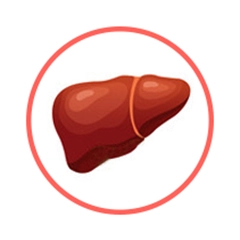
The Liver is a so-called "Zang" Organ. Learn more about the Liver in Chinese Medicine
Liver Qi Stagnation
Pulse type(s): Wiry (Xian)
Tongue color: Normal (light red)
Symptoms: Anger Fever Nausea Sighing Anxiety Blister Vomiting Diarrhea Belching Moodiness Hiccuping Headaches Dark face Melancholy Depression Borborygmi Neck lumps Flank pain Mood swings Fluctuation Breast pain Irritability Breast lumps Constipation Poor appetite Breast eczema Abdominal pain Epigastic pain Breast redness Breast nodules Scanty periods Clots in blood Breast hardness Chest distension Menstrual cramps Frequent sighing Breast distention Dark nipple color Thick breast milk Abdomen distension Hypochondriac pain Breast skin cracks Uneven milk supply Dark colored blood Suppressed emotions Premenstrual tension Breast pus discharge Breast skin ichiness Abdominal distension Lower abdominal pain Feeling of distension Epigastric distension Pre-menstrual tension Epigastrium distension Irregular menstruation White spots on nipples Feelings of frustration HypochondriaI distension Yellow vaginal discharge Sticky vaginal discharge Alternating fever and chills Feeling of lump in the throat Premenstrual breast distension Churning feeling in the stomach Abdominal distention and fullness Feeling of pulsation in epigastrium Alternating constipation and diarrhea Insufficient or absent lactation after childbirth Stifling sensation in the chest causing one to have deep sighs
Wu Yao Tang is sometimes prescribed by TCM practitioners to treat Liver Qi Stagnation. This pattern leads to symptoms such as hypochondriai distension, chest distension, epigastrium distension and abdomen distension. Patients with Liver Qi Stagnation typically exhibit wiry (Xian) pulses as well as Normal or slightly red on the sides.
When Liver Qi does not flow smoothly or regularly, it becomes Stagnant and in Excess. This leads to Heat accumulating in the Liver. This affects not only the Liver, but other connected Organs as well as the Seven Emotions.
Liver Qi Stagnation is not only the most seen Liver disharmony, but also one... read more about Liver Qi Stagnation

Qi is one of Chinese Medicine's vital subtances. Learn more about Qi in Chinese Medicine
Qi Stagnation
Pulse type(s): Tight (Jin), Wiry (Xian)
Tongue coating: Thin white coating
Tongue color: Red sides
Symptoms: Belching Vomiting Depression Mood swings Acid reflux Indigestion Late period Irritability Throat lumps Poor appetite Scanty periods Clots in blood Abdominal pain Frequent sighing Breast distention Soft palpable lumps Feeling of distension Moving distending pain Irregular menstruation Fixed pain in the hypochondria Premenstrual breast distension Mild coughing with copious sputum Premenstrual abdominal distension Feeling of oppression of the chest Stifling sensation in the chest and abdomen
Wu Yao Tang is sometimes prescribed by TCM practitioners to treat Qi Stagnation. This pattern leads to symptoms such as feeling of distension, moving distending pain, depression and irritability. Patients with Qi Stagnation typically exhibit tight (Jin) or wiry (Xian) pulses as well as Normal or slightly dark on side with white or yellow coating.
If the flow of Qi is impeded in any way, it becomes stuck or stagnant. This can be likened to a traffic jam on the freeway. That's why, unlike in the cases of Qi Deficiency or Qi Sinking, tonification is contraindicated: it would be like adding more cars to the traffic jam. Instead, Qi moving or... read more about Qi Stagnation
Formulas similar to Wu Yao Tang
Ge Xia Zhu Yu Tang is 50% similar to Wu Yao Tang
Shao Yao Tang is 44% similar to Wu Yao Tang
Qing Re Tiao Xue Tang is 40% similar to Wu Yao Tang
Guo Qi Yin is 36% similar to Wu Yao Tang
Chai Hu Shu Gan San is 33% similar to Wu Yao Tang
Ba Zhen Yi Mu Tang is 33% similar to Wu Yao Tang

